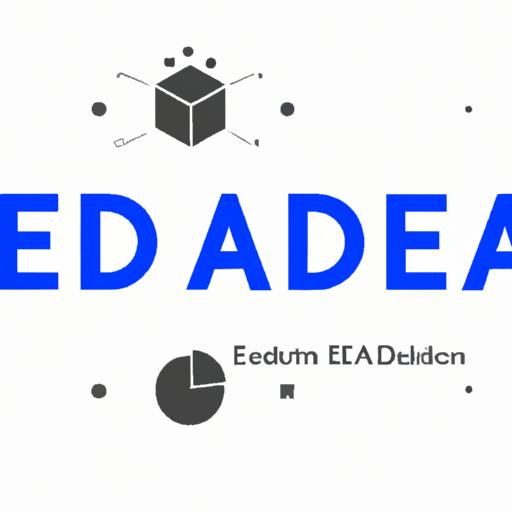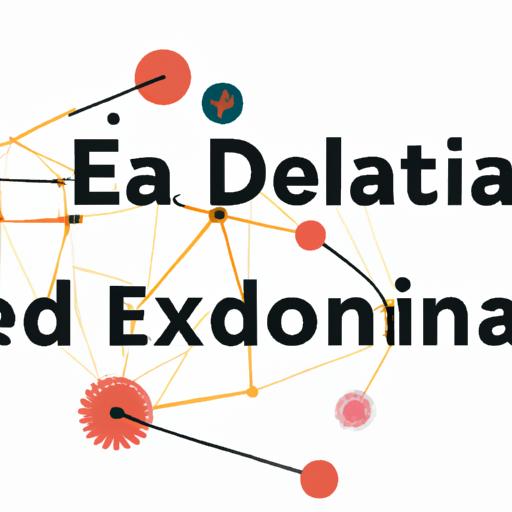Data science has revolutionized countless industries, offering unprecedented insights and driving informed decision-making. At the core of this transformative field lies Exploratory Data Analysis (EDA), an essential process that uncovers hidden patterns, trends, and relationships within datasets. In this article, we will delve into the intricacies of EDA, understand its significance in data analysis, and explore its vast applications. So, let’s embark on this data-driven journey together!
Definition of EDA in Data Science

EDA, in simple terms, refers to the preliminary examination of data using various statistical and visualization techniques. It involves scrutinizing the raw data to discover potential patterns, outliers, and relationships. By exploring the data in a systematic and intuitive manner, data scientists gain valuable insights that lay the foundation for further analysis and modeling.
Importance of EDA in Data Analysis

EDA plays a pivotal role in the data analysis process. It helps us comprehend the underlying structure of the data, identify data quality issues, and derive meaningful insights. Without EDA, we would be blindly applying complex algorithms to our datasets, overlooking crucial details that could lead to flawed conclusions. EDA acts as the compass that guides us through the vast sea of data, ensuring we navigate in the right direction.
Overview of the Article’s Content

In this article, we will delve deeper into EDA, unraveling its techniques, benefits, and best practices. We will explore the statistical methods and visualization techniques employed in EDA, empowering you to make informed decisions when exploring your own datasets. Additionally, we will highlight the myriad benefits and real-world applications of EDA, showcasing how it enhances data understanding and drives impactful outcomes. Finally, we will conclude with best practices for performing EDA, equipping you with the tools to unleash the true potential of your data.
So, strap in and get ready to unlock the power of data analysis through the lens of EDA. Let’s embark on this enlightening journey together, where data speaks volumes and insights abound.
Understanding EDA in Data Science
Explanation of EDA and its Purpose
EDA serves as the gateway to unraveling the hidden treasures within datasets. It involves a meticulous examination of data through various statistical techniques and visualizations. By scrutinizing the data’s characteristics, distribution, and relationships, EDA uncovers valuable insights that pave the way for informed decision-making.
EDA allows us to understand the story behind the data, answering questions such as: What are the key variables? What patterns or trends exist? Are there any outliers or anomalies? By exploring these aspects, EDA provides a solid foundation for further analysis, modeling, and hypothesis testing.
Role of EDA in the Data Science Process
EDA is not just a preliminary step; it is an integral part of the entire data science process. It acts as a compass, guiding data scientists through the intricacies of the data landscape. EDA helps in identifying data quality issues, such as missing values, inconsistencies, or errors, ensuring data integrity before diving into deeper analysis.
Moreover, EDA facilitates feature engineering, where relevant variables are identified and transformed to enhance model performance. By gaining a deep understanding of the data through EDA, data scientists can make informed decisions about which variables to include, how to handle outliers, and which transformations to apply.
Key Objectives of EDA
EDA has several key objectives, each contributing to a comprehensive understanding of the data:
-
Data Exploration: EDA allows us to explore the data from different angles, uncovering hidden patterns, relationships, and trends that may not be immediately apparent.
-
Data Validation: EDA helps in validating the data by identifying inconsistencies, outliers, or missing values. This ensures the integrity and reliability of the data being analyzed.
-
Feature Selection: EDA aids in selecting relevant features or variables that have a significant impact on the target variable, leading to more accurate and efficient models.
-
Hypothesis Generation: EDA sparks the generation of hypotheses and research questions, guiding further analysis and investigation.
By achieving these objectives, EDA empowers data scientists to make evidence-based decisions, leading to actionable insights and impactful outcomes. So, let’s dive deeper into the techniques and methods used in EDA, uncovering the true power of data exploration.
Techniques and Methods Used in EDA
Exploratory Data Analysis (EDA) employs a range of techniques and methods to uncover hidden insights within datasets. By leveraging statistical techniques, visualization methods, and data cleaning/preprocessing techniques, data scientists can gain a comprehensive understanding of the data at hand. Let’s delve into each of these components to grasp their significance in the EDA process.
Overview of Statistical Techniques Used in EDA
Statistical techniques form the backbone of EDA, enabling data scientists to extract meaningful information from raw data. These techniques encompass measures of central tendency (such as mean, median, and mode), measures of dispersion (such as standard deviation and range), correlation analysis, hypothesis testing, and more. By applying these techniques, we can uncover patterns, trends, and relationships within the data, leading to valuable insights and informed decision-making.
Common Visualization Methods for EDA
Visualization is a powerful tool in EDA, allowing us to visually explore the data and gain intuitive insights. Scatter plots, histograms, box plots, heatmaps, and line charts are just a few examples of visualization methods used in EDA. These visual representations help us identify outliers, understand the distribution of data, detect patterns and clusters, and reveal dependencies between variables. By leveraging the art of visualization, EDA becomes an immersive experience, where data comes to life and tells a compelling story.
Data Cleaning and Preprocessing Techniques in EDA
Before diving into EDA, it is crucial to ensure the data is clean, consistent, and ready for analysis. Data cleaning and preprocessing techniques involve handling missing values, removing duplicates, addressing outliers, and transforming variables to meet the requirements of the analysis. These steps help eliminate biases and inaccuracies, ensuring the integrity of the data. By meticulously cleaning and preprocessing the data, we lay a solid foundation for accurate and meaningful exploratory analysis.
In the next section, we will explore the benefits and applications of EDA in data science, showcasing real-world examples of how EDA has transformed industries and empowered data-driven decision-making. Prepare to witness the true power of EDA in action!
Benefits and Applications of EDA in Data Science
Data analysis is not just about crunching numbers; it’s about extracting meaningful insights that drive informed decision-making. EDA plays a critical role in this process, offering a plethora of benefits and applications that empower data scientists to uncover hidden gems within their datasets. Let’s explore some of the key advantages and real-world applications of EDA.
Enhanced Data Understanding and Insights
EDA serves as a magnifying glass, enabling us to dive deep into our datasets and gain a comprehensive understanding of the underlying patterns and relationships. By visualizing data through charts, graphs, and plots, we can identify trends, correlations, and anomalies that might be otherwise overlooked. These insights not only provide a holistic view of the data but also act as a stepping stone for further analysis and modeling.
Identification of Patterns, Trends, and Outliers
In the vast sea of data, patterns and trends often hide in plain sight, waiting to be discovered. EDA equips data scientists with the tools to unearth these hidden gems. By analyzing the distribution of variables, examining summary statistics, and employing statistical techniques, EDA helps identify recurring patterns, trends, and outliers. This knowledge is invaluable in various domains, from finance and marketing to healthcare and beyond.
Use Cases and Real-World Applications of EDA
EDA finds applications in a myriad of industries and domains, where data-driven insights are paramount. In finance, EDA aids in detecting fraudulent transactions and analyzing market trends. In healthcare, EDA uncovers patterns in patient data, leading to improved diagnoses and personalized treatments. In marketing, EDA helps identify customer segments and optimize advertising strategies. The applications of EDA are limitless, revolutionizing industries and shaping the way we make decisions.
As we unravel the benefits and applications of EDA, it becomes evident that this preliminary data exploration process is not just a mere step in the data analysis journey; it is the foundation upon which valuable insights and meaningful outcomes are built. So, embrace the power of EDA and unlock the hidden potential within your datasets. The possibilities are boundless, and the rewards are immeasurable.
Best Practices for Performing EDA
Exploratory Data Analysis (EDA) is a powerful tool that can unlock hidden insights within datasets. To ensure you make the most of this process, it’s important to follow best practices that maximize the effectiveness and reliability of your analysis. Here, we present a step-by-step guide to conducting EDA effectively, emphasizing the significance of appropriate visualizations, statistical methods, and considerations for handling missing values and outliers.
Step-by-Step Guide to Conducting EDA Effectively
-
Data Familiarization: Begin by gaining a comprehensive understanding of your dataset. Familiarize yourself with the variables, their types, and their meanings. This step helps you identify potential data quality issues and establish a solid foundation for your analysis.
-
Data Cleaning: Cleanse your dataset by addressing missing values, duplicates, and inconsistencies. Impute missing values using appropriate techniques, remove duplicates, and resolve any inconsistencies to ensure accurate and reliable results during analysis.
-
Univariate Analysis: Dive into the individual variables of your dataset through univariate analysis. This involves examining each variable individually, exploring its distribution, central tendency, and spread. Visualizations like histograms, box plots, and summary statistics provide valuable insights into the characteristics of each variable.
-
Bivariate Analysis: Move on to exploring relationships between pairs of variables using bivariate analysis. This involves examining correlations, associations, and dependencies between variables. Scatter plots, correlation matrices, and heatmaps are useful tools to visualize these relationships.
-
Multivariate Analysis: Extend your analysis to include multiple variables simultaneously through multivariate analysis. This helps uncover complex relationships and interactions between variables. Techniques like cluster analysis, factor analysis, and dimensionality reduction can provide valuable insights into the underlying structures within your data.
Importance of Choosing Appropriate Visualizations and Statistical Methods
Choosing the right visualizations and statistical methods is crucial for effective EDA. Visualizations provide intuitive representations of the data, making patterns and trends easier to identify. Bar charts, line graphs, scatter plots, and heatmaps are just a few examples of visualizations that can enhance your analysis.
Similarly, selecting appropriate statistical methods such as measures of central tendency, dispersion, correlation, and hypothesis testing ensures accurate and meaningful interpretations of the data. Understanding the strengths and limitations of various statistical techniques allows you to extract valuable insights and draw reliable conclusions.
Considerations for Handling Missing Values and Outliers
Missing values and outliers can significantly impact the accuracy and reliability of your analysis. When dealing with missing values, consider imputation techniques such as mean, median, or regression-based imputation, depending on the nature of your data. Alternatively, you may choose to remove records with missing values, provided it doesn’t introduce bias into your analysis.
Outliers, on the other hand, can distort statistical measures and affect the overall analysis. Carefully evaluate the nature and significance of outliers before deciding whether to remove them or transform the data.
By following these best practices, you can ensure that your EDA is conducted effectively, providing you with accurate insights and laying a solid foundation for further analysis and modeling. Remember, the quality of your EDA directly impacts the validity and reliability of your data analysis. So, approach it with care and precision to unlock the true potential of your datasets.
